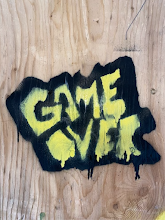
I have been asked to do an interview on the Fish Plant Project for our local CBC station. I love these opportunities to talk about the work. One thing came up while the reporter was doing some preliminary work with me over the phone. He commented on my effort to commit to posterity those “bygone days” when the fish industry was in full swing on the island.
This brings up one of my most pressing ideological ideas about photography. Penny Cousineau-Levine (who was my thesis advisor) wrote a book called “Faking Death”1 in which one of her primary premises is that all photography is essentially about death (I am grossly oversimplifying for arguments sake). This has been a recurring theme in many important writings about photography (Barthes, Sontag) and is, to some extent, true.
The act of photographing is synonymous with the act of remembering; and to remember is to put something firmly in the past, to place it in memory. My approach to photography is more writerly, I use images much like the writer uses words; and what I like to write about is philosophy. I truly believe that photographs can enter into the philosophical discourse of our day, offering insights as well as theoretical constructs. I often tell people that I photograph because I cannot write (as is evidenced in these nervous words).
My idea about this project is more linked to trying to show these spaces as having potential, culturally and economically. These plants were and are the central focus of many communities; to some extent many of these communities exist because of
 fishing activities. But again, this is not entirely true. Recent research shows that the fishery is actually more lucrative today than it was before the moratorium.
fishing activities. But again, this is not entirely true. Recent research shows that the fishery is actually more lucrative today than it was before the moratorium.All this requires us to ask many important questions. My point is this. These are incredibly active spaces, they inspire and they speak. My sincere hope is that, by assembling these images into an edited sequence, that we will be able to see beyond the past and create a future for these buildings and these communities.
1- McGill-Queen's Press - MQUP, 2004, ISBN 0773528261
BARTHES, Roland, La Chambre Claire, Gallimard, Paris, 1980
SONTAG, Susan, On Photography, Farrar, Straus and Giroux, New York, 1977. ISBN 0374226261.


No comments:
Post a Comment